Summit Metro Parks celebrates Valley View Area and Cuyahoga River restoration
What is now the Valley View Area of Cascade Valley Metro Park was always supposed to be a park.
When the predecessor of Summit Metro Parks, the Akron Metropolitan Park District, was created more than 100 years ago, park officials identified the site as prime parkland in its original 1925 master plan created by renowned landscape architects the Olmsted Brothers.
Now, decades and millions of dollars later, the property — the “missing piece” that was previously a dairy farm and then a golf course — now connects 1,800 acres of protected green space across three metro parks: Cascade Valley, Gorge and Sand Run.
The park district and several other partner agencies last week celebrated the “Valley View River Celebration” in the Himelright Lodge, which was the property’s former dairy barn, then the former golf course clubhouse.
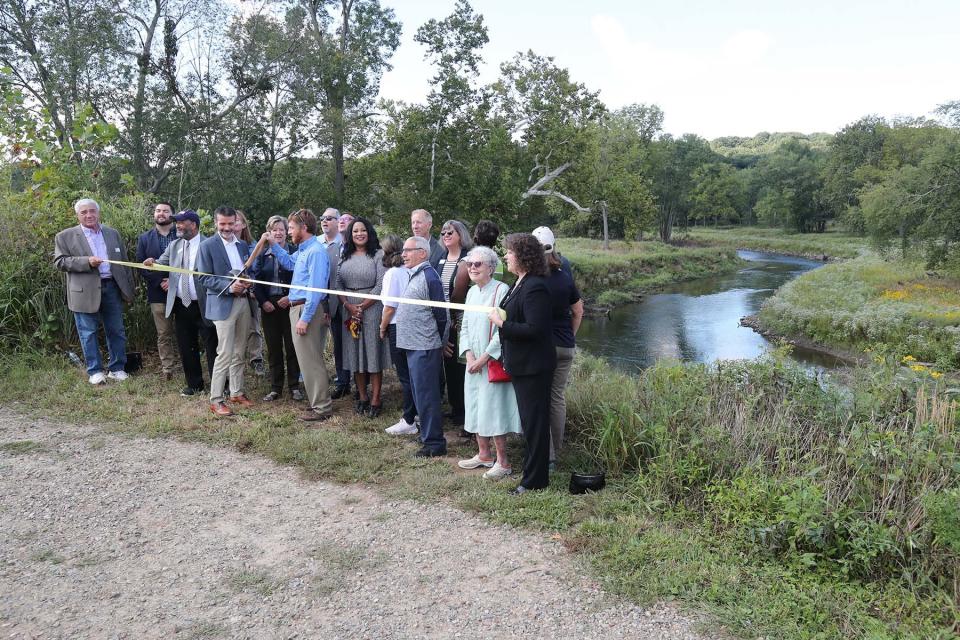
The celebration recognized the successes of the restoration work for wildlife and the environment. It also included the premiere of the 20-minute documentary “Restoring the Missing Link: Valley View Joins Cascade Valley Metro Park” and a ceremonial ribbon-cutting overlooking the Cuyahoga River about a half-mile from the rentable Himelright Lodge.
Summit Metro Parks:Valley View Area of Cascade Valley Metro Park includes Celebration Trail, Don Drumm sculpture
History of the Valley View Area
The site, located near the confluence of the Cuyahoga and Little Cuyahoga rivers, is believed to have been used by Indigenous people for transportation and natural resources, said Megan Shaeffer, Summit Metro Parks cultural resources coordinator.
The park district has conducted archaeological digs on the property to learn more about its past, including in an area long rumored to have been a boatyard used to build boats along the Cuyahoga River for use in the War of 1812. No evidence of the boatyard was found.
Crews also explored Honeywell Drive, a former residential street built in the 1940s. Many of the residents were African Americans who traveled north for jobs in Akron’s industrial sector. Part of the site was marketed to potential homeowners as the city’s first racially integrated neighborhood, according to the park district.
Shaeffer said that the site, a small neighborhood at the northern end of the property, was called Wheelock Cuyahoga Acres, founded by developer Odell K. Wheelock from Cleveland. He sold lots in that neighborhood to both white people and people of color, “which in the 1940s was kind of unusual. It was kind of a rare thing,” she said.
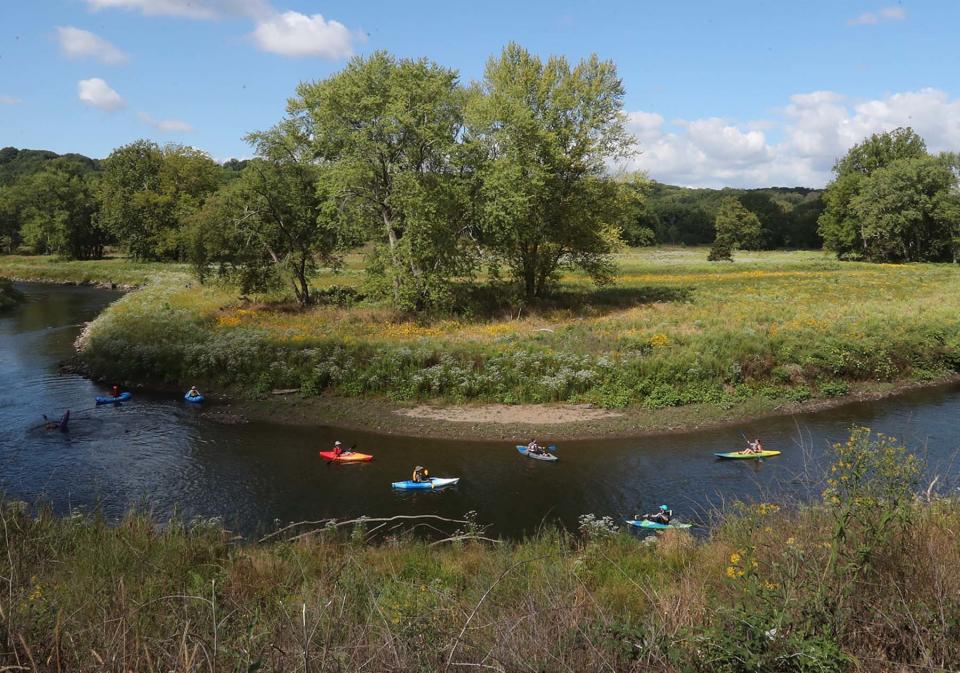
The property was sold to the Himelright family in 1887. From the late 1800s until the mid-1950s, the area operated as the 87-acre Himelright Farm, one of Akron’s last dairy farms. The 27-hole Valley View Golf Club opened after Carl Springer purchased the farm from Ray and Fern Himelright in 1956. The property had been in the Himelright name since the late 1800s.
Valley View Golf Club closed in 2015 and was sold to the park district for $4 million in 2016.
Summit Metro Parks Board of Park Commissioners Chair Joel Bailey said he called the purchase “the Louisiana Purchase, because of its strategic location and its historical significance.”
Ohio Environmental Protection Agency Area of Concern Coordinator Melanie Barbis said that people may think a golf course is “beautiful greenery," but when it comes to water quality, "it isn't really great for the biological activity and diversity.”
When the golf course was constructed, the natural wetlands and streams were drained and replaced with drains and artificial ponds.
Ryan Darnton, habitat resource specialist with the Great Lakes Regional Office of the National Oceanic and Atmospheric Administration Restoration Center, said the river had been separated from its floodplain and was “a deep channel with steep banks on either side that caused erosion.” As a result, sediment accumulated in the water, which negatively affected fish and other wildlife.
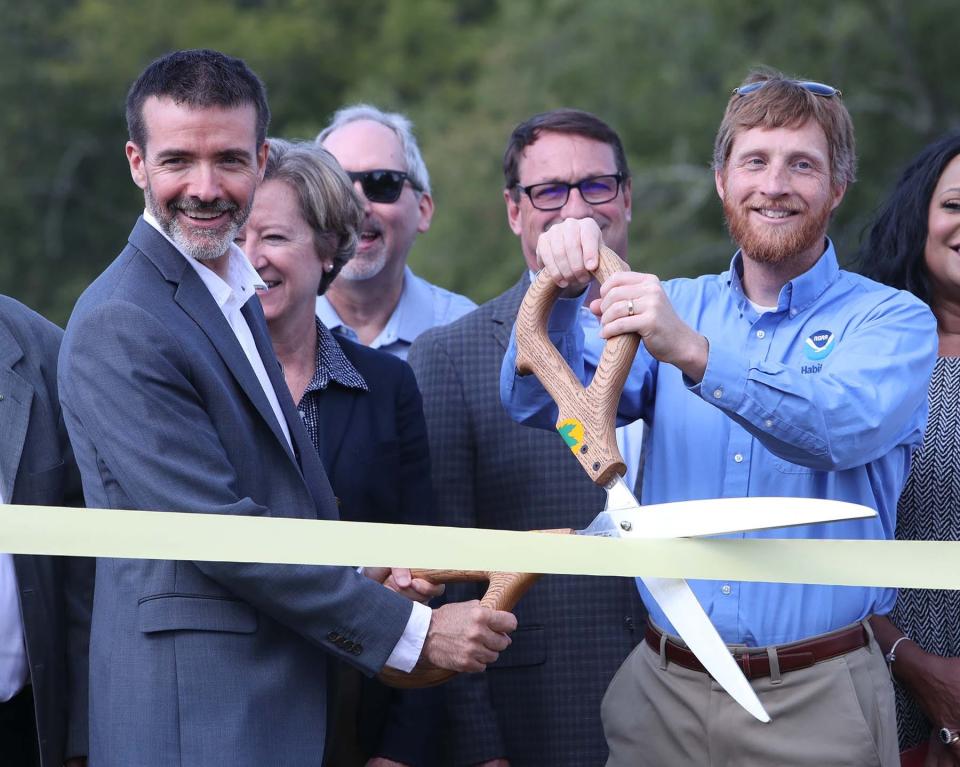
Restoration of Valley View Area
Since the purchase, the 200-acre site, at 1212 Cuyahoga St. in Akron’s Merriman Valley, has been transformed in a $3 million project into a renaturalized area featuring a restored 1-mile section of the Cuyahoga River.
Phases of work at the site included floodplain excavation and in-stream habitat improvements for fish and aquatic wildlife; work to make the river more accessible for water-based recreation, like canoeing, kayaking and shore fishing; the removal of non-native vegetation; and restoring streams and wetlands covered to create the golf course.
Summit Metro Parks Chief of Conservation Mike Johnson said more than 500 species of plants and wildlife now inhabit the former golf course. They include bald eagles, falcons, wild turkeys, whited-tail deer, green herons and spotted sandpipers.
According to Summit Metro Parks, the number of fish species in the Valley View stretch of the river has grown from 18 to 26, and the abundance of fish has grown from 226 fish per kilometer to 806, with sensitive fish species such as hogsucker and river chub now found.

Great Lakes Commission Project Manager Eric Ellis said the bigmouth buffalo — a long-lived fish native to the Great Lakes that looks like “a giant goldfish or small carp” — was found in the Valley View stretch of the Cuyahoga River during post-restoration monitoring. It had never before been seen in Summit County.
"I think its presence here is a sign of success and the impact of this restoration and all the work that's gone into healing this river and that we’ll continue to see," he said.
Darnton, from NOAA, said that the restoration reconnected the river with its floodplain, which “helps to increase the water clarity and the oxygenation in the water.”
Summit Metro Parks biologist Rob Curtis said 120,000 native trees were planted during a public planting event for the site, which previously included 160 acres of lawn.
Dion Harris, landscape artist for Summit Metro Parks, said a stormwater runoff area behind the lodge doubles as a rock play area for kids.
Material taken from the river was used as the base material for the road in the park, Nick Moskos, chief of planning and development for the parks, said.
Future plans include a new trail network, a put-in for kayaks and canoes, several scenic overlooks, rentable shelters, restrooms, picnic areas and a bridge connection to the Ohio & Erie Canalway Towpath Trail.
The site also includes the 1.6-mile Celebration Trail, which was created to mark the park district’s 100th anniversary last year, and "Sun Tracker,” a 19-foot stainless steel sculpture by local artist Don Drumm.
As a condition of Knight Foundation funding, the park district worked with immigrants and refugees in nearby North Hill on what they wanted the space to be, including for opportunities to hold celebrations.
Shaeffer said that the refugee community had been using the parks in the area for many years, so the park district reached out to its members to ask about components in the Valley View Area they wanted to see that would benefit their community. Those included spaces and food stalls to sell goods, space for festivals and a stage area for musical or dance performances or special events. Those were all included.
Moskos said the space includes a large events area with space for tents and food trucks. The space can also be used for weddings.
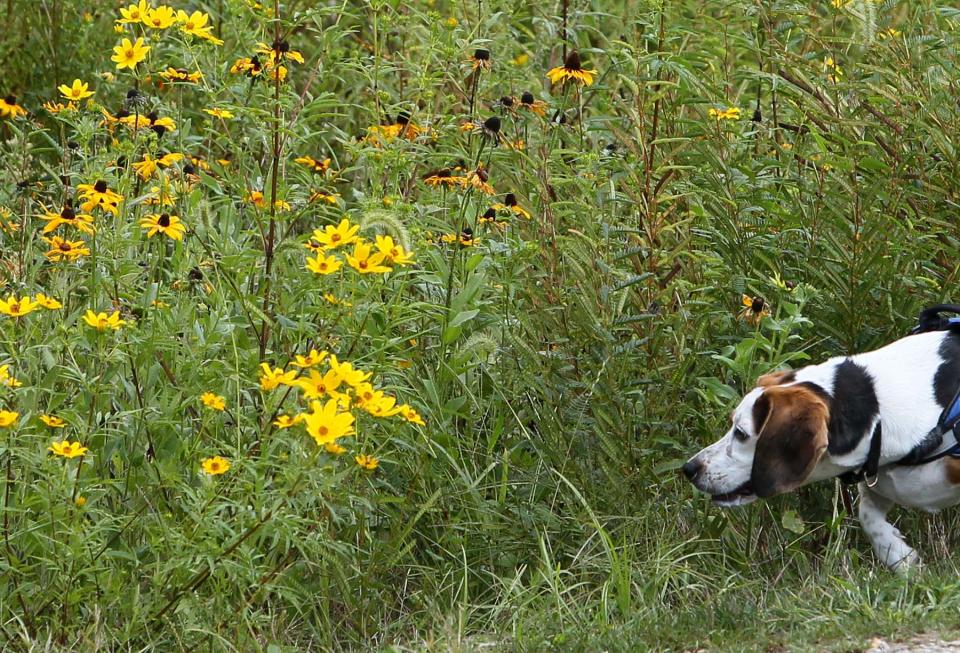
One step closer to delisting Cuyahoga River as area of concern
The restoration work is also moving the Cuyahoga River one step closer to being delisted as an "area of concern."
In the early 1980s, the Cuyahoga River was listed as one of 43 areas of concern, where human activities have caused significant impairment of beneficial uses, in the Great Lakes region of the United States and Canada.
The Cuyahoga River Area of Concern includes the lower 46.5 miles of the river, starting at the Gorge Dam pool along the Akron-Cuyahoga Falls boundary and ending at Lake Erie.
There are nine beneficial use impairments. The removed impairments include degradation of aesthetics (2017), restrictions on fish and wildlife consumption (2019) and undesirable algae (2021). The remaining impairments include degradation of fish and wildlife populations, fish tumors or other deformities, degradation of benthos (what lives on the bottom of the river), restrictions on navigational dredging, beach closings and loss of fish habitat.
“Valley View is a critical complement of the restoration of the Cuyahoga area of concern. It has restored wetlands and enhanced river function and habitat to be used by many important species,” Darnton said. “Through projects like this, we expect to see continued improvements in river and floodplain function, and we also someday — after the completion of the other management actions — hope to see the area of concern designation removed entirely.”
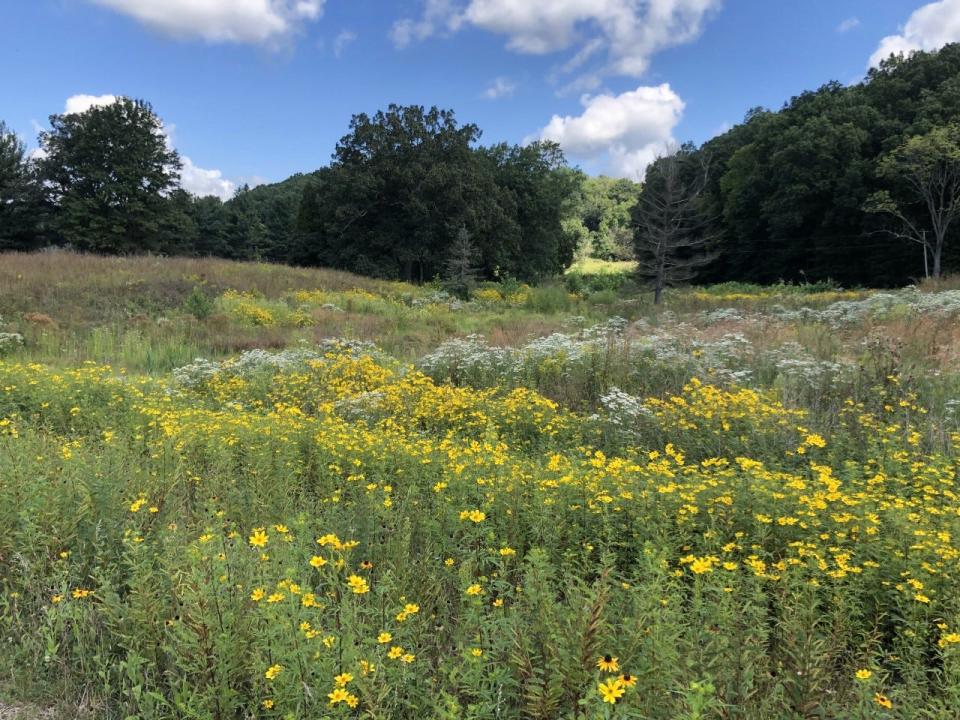
U.S. EPA Great Lakes National Program Office Director Chris Korleski said his office administers the Great Lakes Restoration Initiative, which Congress began funding in 2010, with $475 million in its first year and about $300 million annually since then. The areas of concern are part of the office.
Between the early 1980s and 2010, only one of the areas of concern was cleaned up, Korleski said. But with the GLRI funding, five have been delisted since 2010, and the office’s goal is to clean up all but three by 2030, with the help of $1 billion from the Bipartisan Infrastructure Law.
“To look at a meeting like this and to look at all of you and look at what's actually being done — not just ecologically revitalizing this community, but economically revitalizing this community — is nothing short of a miracle,” he said during the celebration.
Cuyahoga Falls Mayor Don Walters said that economic revitalization is vital to attracting and retaining young people living in the area, saying young people demand these kinds of amenities in the places they live.
“They can go anywhere,” he said. “If you don't provide the amenities that they like, they're off to Austin, Texas, or West Coast somewhere, a cool city. We're a cool city here, because we provide all those things.”
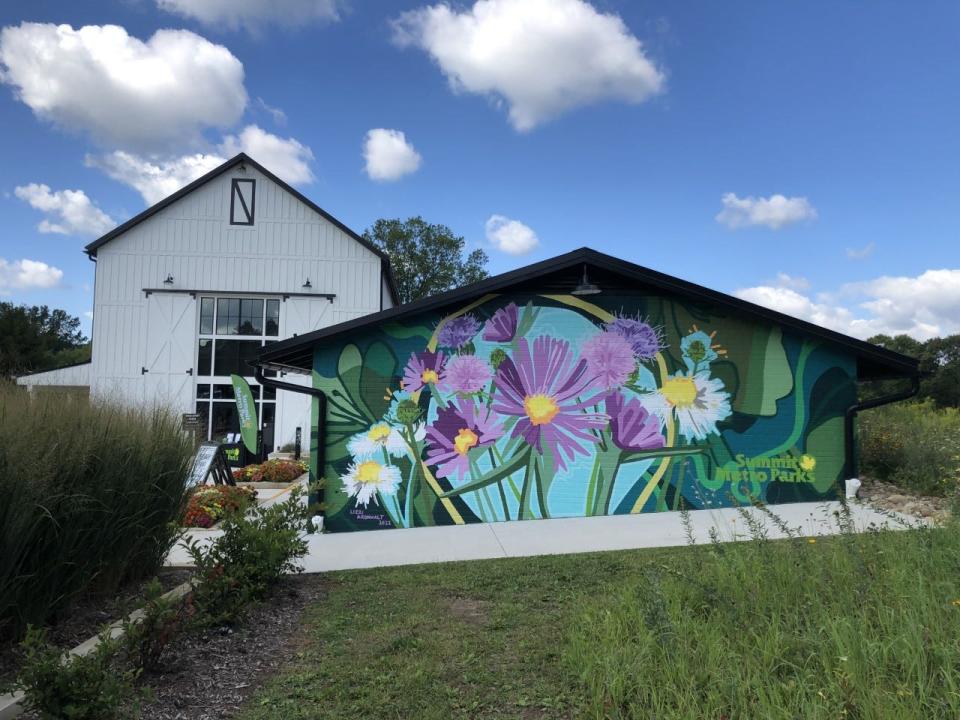
Ellis said that an independent economic analysis showed every dollar of GLRI funding generates $3.35 of additional economic activity in the Great Lakes region, with benefits including increased property values, opportunities for recreation, better water quality, better fish and wildlife habitat and retention of young people living in the area.
Project partners for the river restoration include NOAA, the Great Lakes Commission and the Ohio Public Works Commission. Other funding partners include the U.S. EPA GLRI, the Cuyahoga Area of Concern program through the Ohio Lake Erie Commission, the Ohio EPA, the local Cuyahoga AOC Advisory Committee and the Knight Foundation.
“This park and the river within it symbolize the true value of meaningful partnerships,” Summit Metro Parks Executive Director Lisa King said.
Contact Beacon Journal reporter Emily Mills at emills@thebeaconjournal.com and on Twitter @EmilyMills818.
This article originally appeared on Akron Beacon Journal: Summit Metro Parks celebrates Valley View Area, Cuyahoga River restoration

